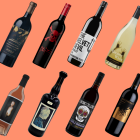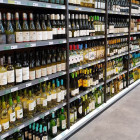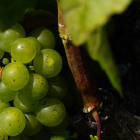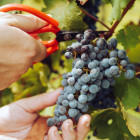Environmental concerns are taking greater prominence in every aspect of life, from the cars we drive and the stores we shop at, to dietary choices and even the way we bank. Wine is no exception, and bottles brandishing terms such as ‘organic’ or ‘sustainable’ are gaining traction with a consumer base increasingly keen to green their lives. But not all ‘eco-friendly’ wines are created equal – here are the key differences.
Organic wine
The modern organic wine industry first emerged in Western Europe and the US during the 70s, but failed to gain the foothold that it’s seeing now. Today, organic wine is still a relatively small sector of the industry, accounting for just 3.6% of global consumption, but more than one billion bottles are set to be consumed around the world every year by 2022, so it’s becoming increasingly significant.
In terms of environmental credentials, organic wine has some of the most stringent requirements. In the US, organic wines are made from certified organically-grown grapes, free of any synthetic pesticides or additives, and – crucially – without any added sulphites. Only wines meeting these strict rules will get USDA Organic certification, and not many do, as sulphur is still the best natural preservative for wine (USDA Organic wines have a much shorter shelf life than other wines and don’t cellar well).
In Europe, however, official organic certification stipulates that wines must be made from organically-grown grapes, all additives such as yeast and fining agents are organic, there are no GMOs and, unlike USDA guidelines, added sulphur is permitted as long as it’s limited to 100 ppm in reds and 150 ppm in whites. As such, certified organic wines in Europe tend to have a longer shelf life than their US counterparts. However, some US winemakers get around this issue by labelling their bottles ‘made with organic grapes’, so the wine is not organic in the truest sense, but the grapes used to make it are, even if there are other additives involved.
Biodynamic wine
The idea of biodynamic agriculture was developed by Rudolf Steiner, whose work in the early 20th century predates most of the organic movement. Like organic farming, biodynamic wine also avoids the use of synthetic chemicals (and so without sulphites will have a shorter self-life), but takes a much more holistic approach to the vineyard as an entire ecosystem, aiming to encourage ecological self-sufficiency through interconnected living systems.
As such, a great many factors are taken into account during the growing season, such as astrological influences, lunar cycles and special soil preparations. While biodynamics isn’t necessarily based in hard science, proponents claim the process produces consistently good results in terms of vineyard health, which can of course lead to excellent wines. Some of the greatest wine estates, such as Domaine Leroy in Burgundy and Maison Chaputier in the Rhone Valley, employ biodynamic techniques. While there are no official rules for the biodynamics sector, there are two programmes that certify wine internationally: Demeter and Biodyvin.
Sustainable wines
Compared to organic and biodynamic wines, sustainable viticulture is often more attractive to winemakers, as it can present fewer challenges. Essentially, the practice involves taking an environmentally-minded approach to the entire winemaking process, from grape to bottle. This will include factors such as maintaining biodiversity, implementing recycling measures to conserve water, using renewable technologies and taking steps to reduce wastefulness as much as possible.
There are no global standards for sustainable wine, although the International Organization for Standardization (ISO) has a set of standards (the ISO 14000 group) that helps companies and organsiations manage their environmental responsibilities. Because ISO continually updates and revises sustainability guidelines and compliances it makes a good international baseline for sustainability. A number of wine regions, such as Bordeaux, Chile and Australia use the ISO standard.
There are other third-party certifications, too (more than 100 globally, in fact), such as SIP (Sustainability in Practice) in California, LIVE (Low Input Viticulture and Enology) in Oregon, Washington and Idaho, and SWNZ (Sustainable Winegrowing New Zealand). Most take a pragmatic attitude to their certification, and unlike organic or biodynamic farming, will adopt a ‘Lutte Raisonnee’ approach. This means ‘reasoned fight’, and accepts that some compromises need to be made when it comes to finding the balance between the success of a business and environmental profits. For example, if there was a choice to be made between using pesticides or losing a large volume of grapes, spraying would be the practical option.






